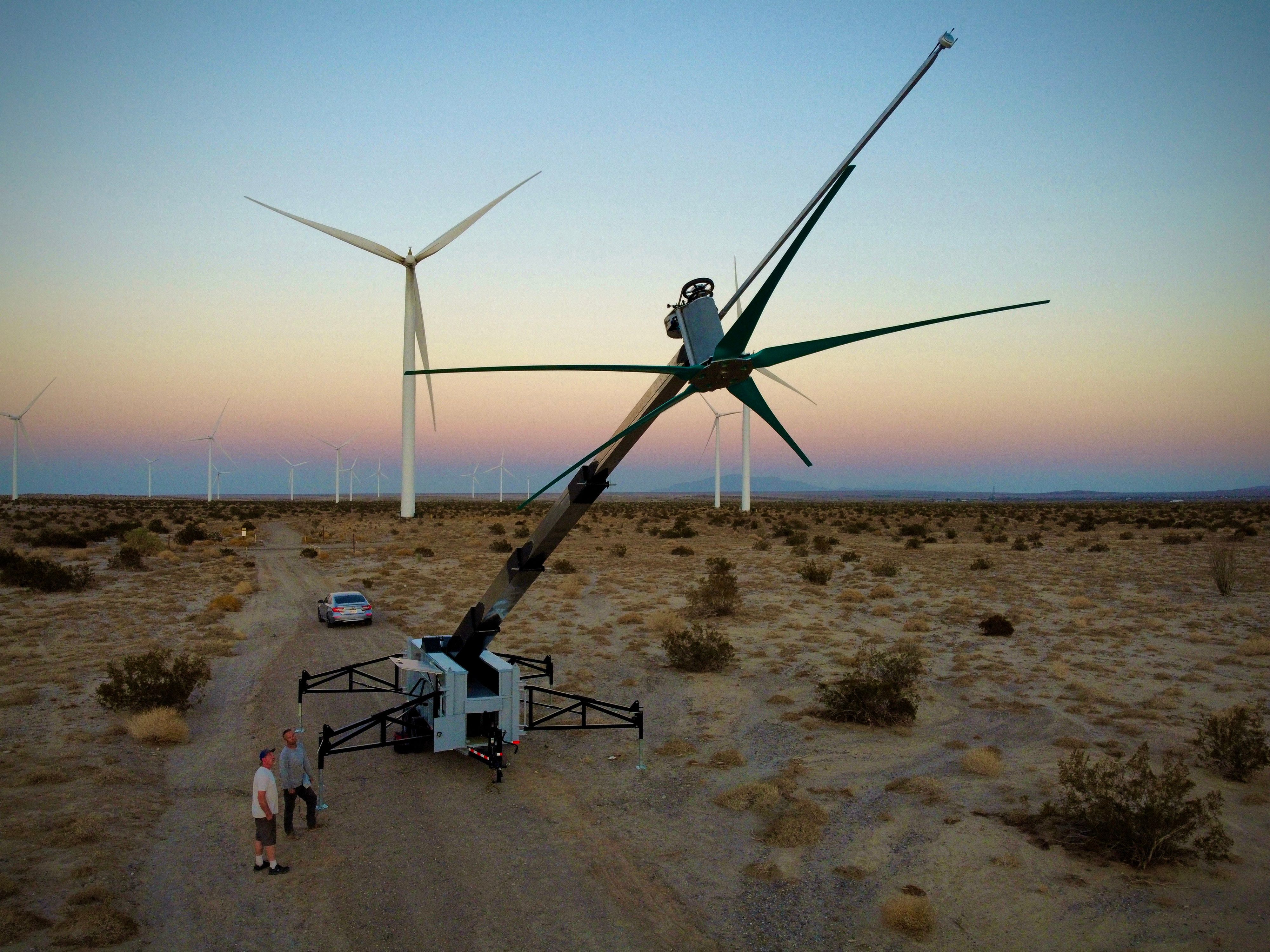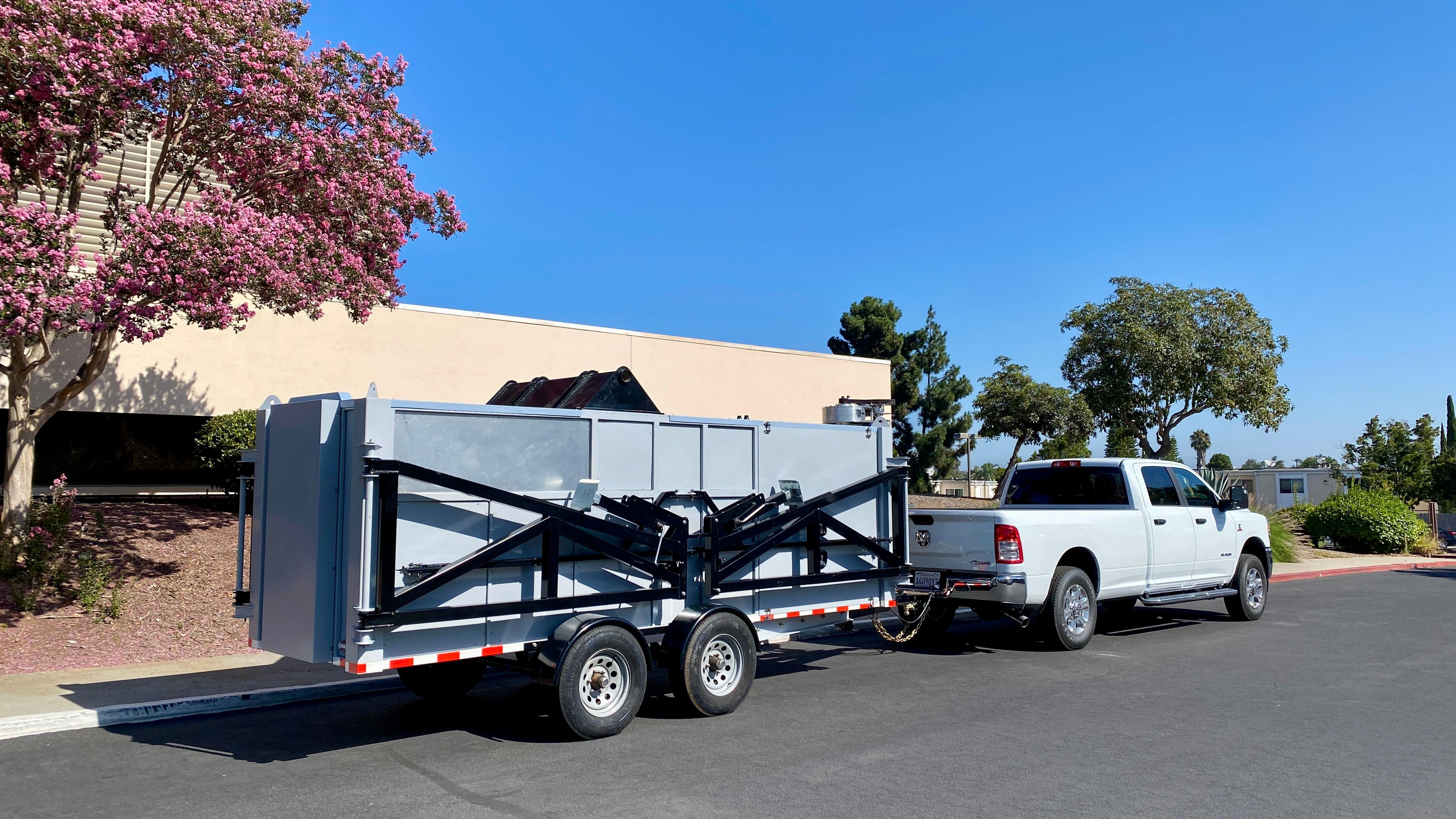
The Benefits of Mobile Wind Energy
info@upriseenergy.com
info@upriseenergy.com
Energy markets around the world are undergoing a fundamental shift. Populations are growing, electrification is accelerating, and new technologies like AI and robotics are driving per-capita energy demands higher than ever. The simple truth is this: the world needs more power; power in all forms, in more places, delivered more reliably.
Yet billions of people still live without dependable electricity. According to the International Energy Agency, more than 700 million people lack access to electricity, while billions more experience regular outages or rely on fragile grids that cannot keep up with demand. This isn’t just a problem for developing nations even in the U.S., communities on the grid’s edge experience blackouts during extreme weather, wildfires, and Public Safety Power Shutoffs.
Historically, the fallback solution has been the diesel generator. But diesel is a poor long-term answer. It’s dirty, expensive, and labor-intensive. Fuel supply chains are vulnerable to disruption, and running costs are far higher than many realize. In a detailed study, Uprise calculated the true cost of diesel generation at $0.87–$0.98 per kWh, assuming best-case conditions and a fuel price of $4.92/gal. In less efficient, real-world applications, that number can easily double. Over the life of a 10 kW generator, fuel alone can exceed $1.1 million.
And in extreme situations like the battlefield, the picture gets even worse. The Department of Defense has documented cases where more fuel is consumed delivering diesel than what arrives at its destination, driving the effective cost to over $400 per gallon. At those prices, diesel isn’t just unsustainable, it’s untenable.
For decades, power was delivered through a centralized utility model: large plants connected to sprawling transmission lines. But this model is increasingly strained. Transmission bottlenecks delay projects, and grid build-outs can take decades.
Distributed generation is changing that. Solar has already shown what’s possible; homes, businesses, and parking lots across the world are now small-scale power producers. But solar is just one piece of the puzzle. As Chamath Palihapitiya has said, “The future of energy is local.” For distributed renewables to truly meet global needs, we need more options.
That’s where mobile wind energy comes in.

Uprise Energy has developed the world’s first commercially scaled mobile wind turbine nanogrid. For the first time, wind power can be deployed anywhere, in minutes, to provide both temporary and long-term electricity.
The Mobile Power Station (MPS) is a 12 kW variable-speed wind turbine integrated with a 200 kWh battery and advanced power electronics. It can be towed by a standard ¾-ton truck, shipped in a standard container, and set up in under an hour. Once deployed, it provides indefinite power production in suitable wind conditions, with or without grid access.
Unlike solar, which requires large areas to produce significant energy, wind is far more energy dense. That means the MPS can deliver substantially more power with a much smaller footprint. And because renewables are variable by nature, the MPS integrates batteries and controls to smooth out generation and match demand, creating a fully self-contained mobile nanogrid.
The MPS also offers a solar hybrid option, recognizing that in distributed energy, every watt matters. Together, mobile wind and solar make a powerful combination.
Every gallon of diesel burned releases about 20 pounds of CO₂ into the atmosphere. A single Uprise turbine offsets 8,200 gallons of diesel per year, eliminating 165,000 pounds of CO₂ annually, the equivalent of planting 3,450 trees every year. Over a 20-year lifespan, one MPS can offset 3.3 million pounds of CO₂, equal to 69,000 trees.
The financial impact is just as powerful. At diesel’s true cost of $0.87–$0.98 per kWh, the MPS delivers electricity at a fraction of the cost, all while eliminating fuel deliveries, reducing maintenance, and cutting emissions to zero. In extreme scenarios like battlefield logistics where delivered diesel can cost hundreds of dollars per gallon the savings aren’t just substantial, they’re mission-critical.
The ability to “drop” a power plant anywhere unlocks a wide range of applications that legacy technologies can’t match:
Mobile wind fills a hole in the market. No other renewable technology offers the same combination of portability, scalability, and cost-effectiveness. Solar is proven but land-intensive. Diesel is flexible but costly and polluting. The MPS sits at the intersection, delivering the versatility of diesel at a fraction of the lifetime cost, with the environmental benefits of renewables.
As global demand for electricity continues to grow, distributed solutions will define the next era of power. Mobile wind energy, led by Uprise Energy’s Mobile Power Station, represents a critical step toward a cleaner, more resilient, and more accessible energy future.